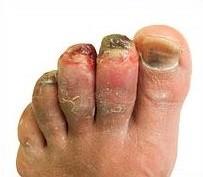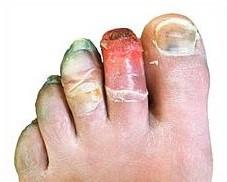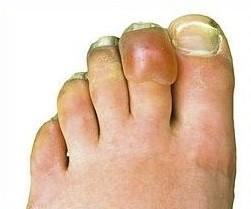Frostbite
Peer reviewed by Dr Colin Tidy, MRCGPLast updated by Dr Toni Hazell, MRCGPLast updated 20 Dec 2023
Meets Patient’s editorial guidelines
- DownloadDownload
- Share
- Language
- Discussion
Frostbite is an injury that is caused by exposure of parts of the body to the cold.
There are different degrees of frostbite. In superficial frostbite, the skin can recover fully with prompt treatment. However, if frostbite is deep, tissue damage can be permanent and tissue loss can occur.
The most important way of preventing frostbite is to get out of the cold. If you are exposed to the cold, make sure that you have adequate protective clothing.
In this article:
Continue reading below
What is frostbite?
Frostbite is an injury that is caused by exposure of parts of your body to temperatures below freezing point. The cold causes freezing of your skin and underlying tissues.
The fingers, toes and feet are most commonly affected but other extremities, including the nose, ears and cheeks, can also develop frostbite.
Frostbite symptoms
Frostbite can cause various symptoms, these include:
Feelings of cold and firmness in the affected area, such as the fingers or toes.
Stinging, burning and numbness.
Pain, throbbing, burning or an electric current-like sensation when the affected area is re-warmed.
In early stage frostbite (frostnip)
the affected part feels cold and is painful to touch, with tingling and numbness. The skin will look mottled and there will be no feeling when it is moved.
In first-degree frostbite
the affected area of skin usually becomes white and feels numb. Sometimes the skin is red. It may also feel hard or stiff. If it is treated quickly, the skin usually recovers fully.
In second-degree frostbite
the affected skin is often red, or may become blue. It feels frozen and hard. There is also usually quite a lot of swelling of the affected area. Blisters filled with a clear or milky fluid appear on the skin.
In third-degree frostbite
skin can be white or blue or blotchy. Blisters also develop and can be filled with blood. Over some weeks, black thick scabs form. The skin feels hard and cold.
In fourth-degree frostbite
there is damage to the full thickness of the skin and also the underlying tissues such as muscle, tendons and bone. The skin is initially deep red and mottled and then becomes black.
The appearance varies depending on how severe a degree of frostbite is present, and on how much of the body has been affected.
Continue reading below
When to see a doctor for frostbite
If you suspect that you have any degree of frostbite (as opposed to just feeling cold) then it would be sensible to seek medical help, after first taking the precautions outlined below in the 'first aid' section. This is particularly important if you have any of the conditions listed below, which may put you at more risk of a bad outcome from frostbite.
What causes frostbite?
When your body is exposed to extreme cold, your blood vessels constrict so that blood (and oxygen) is diverted away from your extremities to your vital organs as a protective response to keep your body alive.
After some time, this lack of blood supply and oxygen to the skin can start to cause damage to the cells.
In areas of the body affected by frostbite, ice crystals form and cells and blood vessels become damaged.
Blood clots can also form in small blood vessels which further reduces the chance of blood and oxygen getting to the affected tissues.
The chance of frostbite is increased the longer that you are exposed to the cold temperatures.
If the cold temperatures are accompanied by wind or high altitude there is a greater risk. Generally, frostbite is worst in lower temperatures.
Continue reading below
The different degrees of frostbite
Frostbite injuries are classified by the degree of injury. The degree of frostbite basically refers to how deep the frostbite goes. Your skin has two layers - the outer layer (epidermis) and the dermis. The dermis sits just under the epidermis. Beneath the dermis is a layer of fat, and then the deeper structures such as muscles and tendons.
First-degree frostbite just affects the epidermis.
Second-degree frostbite may affect the epidermis and part of the dermis.
Third-degree frostbite affects the epidermis, the dermis and the fatty tissue beneath the dermis.
Fourth-degree frostbite affects the full thickness of the skin, the tissues that lie underneath the skin, and also deeper structures such as muscles, tendons and bone.
Frostbite can be described using these four levels but it may simply be described as superficial frostbite or deep frostbite. Superficial frostbite corresponds to first-degree or second-degree frostbite. Deep frostbite corresponds to third-degree or fourth-degree frostbite.
These are important because superficial frostbite means there is likely to be very little or no tissue loss. Deep frostbite suggests there will be greater tissue loss.
How common is frostbite?
Frostbite is uncommon in the UK. However, it can affect anyone who is exposed to temperatures below freezing - in particular, those who wear inadequate clothing.
Frostbite most commonly affects the following groups of people:
Soldiers.
People who work outdoors in the cold.
Homeless people.
Winter outdoor sports enthusiasts such as skiers and climbers.
Who's most at risk of developing frostbite?
You are at a higher risk of frostbite if:
You have underlying health problems such as narrowing of the arteries, mainly occurring in the legs (peripheral arterial disease).
You have diabetes.
You take certain medicines that narrow your blood vessels. Beta-blockers are a good example of this.
If you are very old or very young, as you are less able to regulate your body temperature.
You smoke, as the chemicals in cigarettes can cause your blood vessels to constrict.
You have had alcohol or recreational drugs which make you drowsy or behave differently to usual. This is because you may be less aware of how cold you are and less aware that you are in danger. You are then less likely to get out of the cold, or protect yourself from it.
People who have Raynaud's phenomenon (a condition where the small blood vessels of the fingers constrict) also have an increased risk of developing frostbite.
What is the treatment for frostbite?
First aid treatment
Some basic first aid for frostbite injuries includes:
You must get shelter from the cold.
Change wet clothing for dry clothing. This reduces the chance of further heat loss from your body.
Let the area air dry - don't rub the affected area, as this can cause further tissue damage.
Remove any jewellery, such as rings on fingers, or other material that could tighten around the area.
If a hand or a foot is affected by frostbite, wrap it in a blanket for protection.
If possible, avoid walking on frostbitten feet, as fractures can occur as well as chipping of the affected tissue.
Protect from any possible re-freezing.
Try to ensure the person is rehydrated. Rehydration means making sure a person takes in enough water to make up for lack of water in the body (dehydration). Warm drinks should be used where possible.
Treat hypothermia and any other injuries.
Re-warming treatment
The aim is to start this as soon as possible. However, if there is a chance that the affected area could re-freeze then it is safer to keep it frozen until safe.
Most frostbite will slowly thaw without any special measures and it should be allowed to do so. There should be no deliberate attempt to keep areas frozen.
If someone has been in the mountains and has developed frostbite, they may have other life-threatening problems that need to be treated first.
Rapid re-warming can be done using heated water which should be kept at 37-39°C.
This could take 30 minutes.
The affected area should not be massaged, as this can cause further injury.
Re-warming is usually repeated twice a day.
It is important to keep your skin warm and dry in between treatments.
Treatment with medicines and in hospital
Painkillers are usually needed to treat pain. Re-warming can be very painful so anti-inflammatory painkillers are also given and stronger medication such as morphine may be needed.
Sometimes 'clot-busting' medicines (thrombolytics) may be used in cases of deep frostbite to try to improve the blood supply to the affected area.
Antibiotic medicines are commonly given if there is any sign of infection developing in your frostbite.
You may be given fluids via a drip to make sure you are completely rehydrated.
It is important that you are up to date with your tetanus vaccine.
A surgeon will usually be involved early in care and careful drainage of some clear blisters (not blood-filled) may be needed at first.
How is frostbite diagnosed?
Frostbite is usually diagnosed by the typical symptoms in someone who has been exposed to extreme, cold weather. Frostbite can happen very quickly so you need to be aware of the symptoms and signs.
If you are aware of the early symptoms of frostbite, and shelter from the cold, you can prevent more severe symptoms and the possibility of permanent damage.
Special scans are sometimes used to assess the degree of frostbite and to determine how much tissue is damaged.
What happens next with frostbite?
When a body part with frostbite is thawed out, the skin turns red, may blister and can be very painful. It can also become swollen. Eventually, dead, blackened tissue that forms scabs can develop. The images below show that change.
Frostbite: mountain climber's initial injury

Frostbite: climber's toes 12 days later

Frostbite: climber's toes after three weeks

Images above: by Dr. S. Falz, CC BY-SA 3.0, via Wikimedia Commons
Superficial frostbite
Over time new pink skin will form underneath the scabs. It can take up to six months for the area to recover. There can be full recovery but some people have permanent problems, including pain, numbness and stiffness in the affected area.
Deep frostbite
However, if frostbite is deep, tissue damage can be permanent and tissue loss can occur. For example, the end of a finger or toe can gradually separate off. Sometimes surgery is needed to remove dead tissue.
Amputation of, for example, fingers or toes may be needed. However, surgery will usually be delayed for as long as possible (usually 6-8 weeks). This gives frostbitten tissues a chance to recover and for the full extent of the injury to be seen.
Long-term effects of frostbite
If frostbite is appropriately treated, and caught at an early stage, then there may be no long-term effects. If this is not the case, long-term issues may include numbness, pain, stiffness, and the disabling effects of dealing with life after amputation.
How to prevent frostbite
The most important way of preventing frostbite is to get out of the cold. If you are exposed to the cold, make sure that you wear appropriate warm clothing.
Mittens are better than gloves.
Your head, neck and face need to be covered if it is windy.
Wear waterproof clothing so that your body is kept dry.
Multiple layers of clothing are best, the layers act as extra insulation by trapping air that warms to your body's temperature.
A warm pair of boots is also needed.
You need to increase your fluid and calorie intake in cold weather.
Patient picks for Other skin problems

Skin, nail and hair health
Hidradenitis suppurativa
Hidradenitis suppurativa is a long-term (chronic) skin condition that leads to painful and repeated lumps of pus (boils or abscesses). The exact cause is unknown. Suppuration means formation or discharge of pus. These areas (commonly the armpits and groin) leak pus and are difficult to heal. Eventually, scarring occurs. Treatments include antibiotic lotions or medicines, or an operation to remove the affected skin area. A newer treatment works by blocking a chemical of the immune system that causes inflammation in the body.
by Dr Colin Tidy, MRCGP

Skin, nail and hair health
Pressure sores
A pressure sore is also known as a 'bed sore' or a 'pressure ulcer'. It is a sore or broken (ulcerated) area of skin caused by irritation and continuous pressure on part of your body. Pressure sores are more common over places where your bones are close to your skin (bony prominences) such as your heels, the lower part of your back and your bottom. There are various things that can increase your risk of developing a pressure sore. In particular, risk increases if your mobility is reduced for some reason and you are spending long periods lying in bed or sitting in a chair. There are various measures you can take to prevent most pressure sores developing. These include changing your position as much as possible and also using pressure-relieving devices.
by Dr Hayley Willacy, FRCGP
Further reading and references
- Frostbite; Dermatology Information System (DermIS)
- Basit H, Wallen TJ, Dudley C; Frostbite
- Robins M, Hendriksen S, Cooper JS; Hyperbaric Management Of Frostbite
- Schellenberg M, Cheng V, Inaba K, et al; Frostbite injuries: independent predictors of outcomes. Turk J Surg. 2020 Jun 8;36(2):218-223. doi: 10.5578/turkjsurg.4632. eCollection 2020 Jun.
- McIntosh SE, Freer L, Grissom CK, et al; Wilderness Medical Society Clinical Practice Guidelines for the Prevention and Treatment of Frostbite: 2019 Update. Wilderness Environ Med. 2019 Dec;30(4S):S19-S32. doi: 10.1016/j.wem.2019.05.002. Epub 2019 Jul 17.
Continue reading below
Article history
The information on this page is written and peer reviewed by qualified clinicians.
Next review due: 18 Dec 2028
20 Dec 2023 | Latest version

Ask, share, connect.
Browse discussions, ask questions, and share experiences across hundreds of health topics.

Feeling unwell?
Assess your symptoms online for free